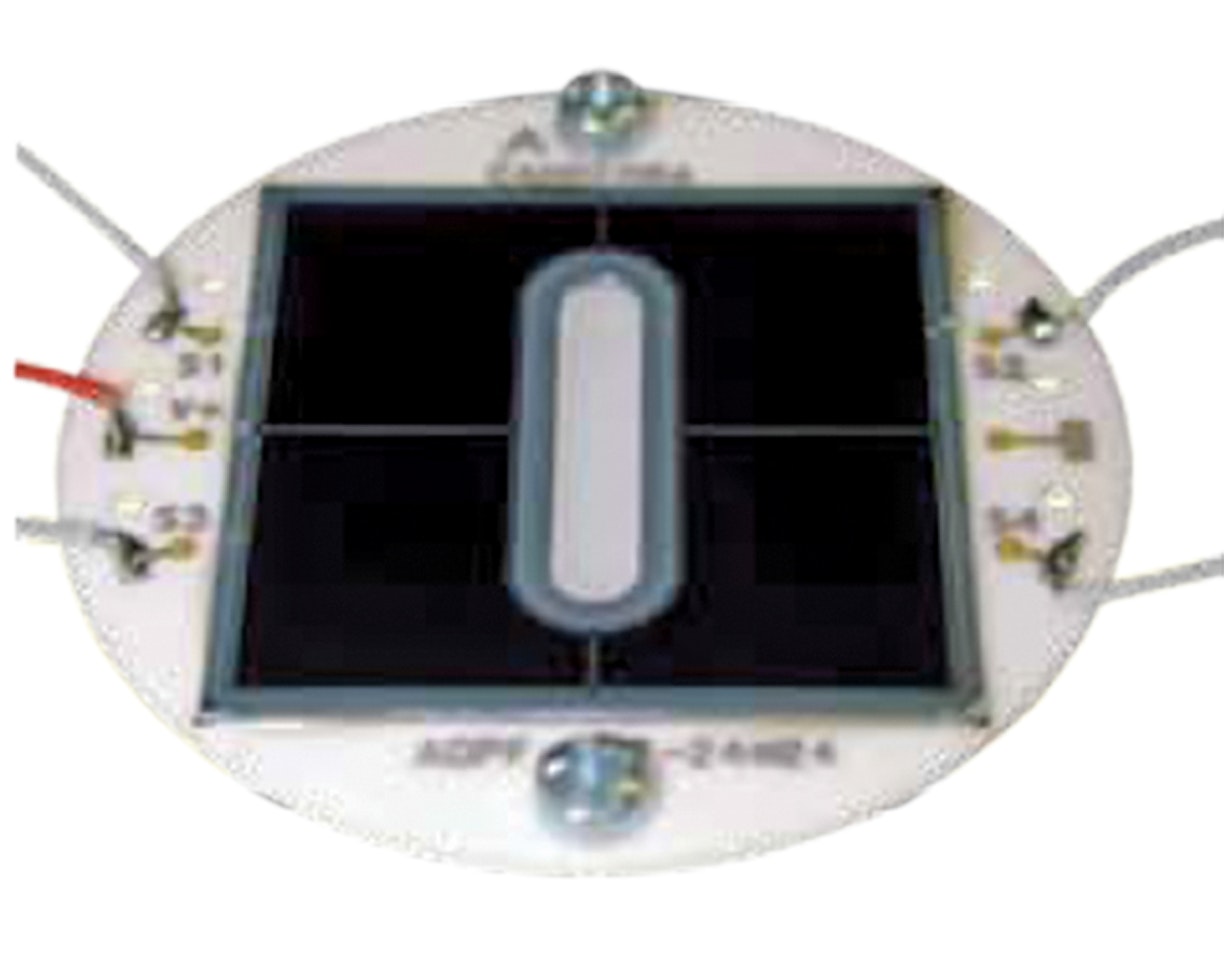
Photo-diodes for Synchrotron Applications
Single or multiple junction on ceramic board Electron Beam Detector Si Photodiodes.
Single or multiple junction on ceramic board Electron Beam Detector Si Photodiodes.
Four Coaxial Germanium Detectors
In the CLOVER detector assembly, the crystals are held on a minimized crystal holder to reduce the quantity of material surrounding the crystals and to improve peak to background ratio.
In the CLOVER detector assembly, the crystals are held on a minimized crystal holder to reduce the quantity of material surrounding the crystals and to improve peak to background ratio. With this principle Mirion is offering an optimized amount of HPGe material within the cap.
Moreover, crystals are packed very closely together to improve the add-back factor. The maximum gap between two adjacent crystals is ≤ 0.7 mm without any absorbent material along the whole crystal length that will absorb more than 1% of 20 keV gamma rays.
The four crystals are mounted in a common cryostat with a tapered or regular square shaped end cap.
Distance between end cap and crystals has been reduced to a very minimum to improve the solid angle and efficiency of any veto detector (BGO) which can surround the CLOVER cap. Also so called back catcher cryostats are available for given CLOVER types where a dedicated BGO detector can be installed at the rear of the cap.
A major advantage of a CLOVER detector consists of its high absorption efficiency: results are not only four times those obtained with a single crystal but, as crystals are mounted without any additional absorbing material, the full energy of a photon Compton scattered and absorbed in a second (or even a third) crystal can be determined. The full energy peak can be obtained by summing (“add-back”) the energies deposited in the N segments ring.
In the EUROGAM CLOVER detectors (dia. = 50 mm, L = 70 mm), the mean relative efficiency of each crystal is between 21 and 22%, whereas the total relative efficiency in “add-back” mode is between 130 and 140%. See Duchene et Al NIM A432-1999-90.
The energy resolution of the four shaped crystals is typically less than 2.1 keV at 1.33 MeV and 1.05 keV at 122 keV. In add-back mode, the energy resolution is still excellent: 2.3 keV at 1.33 MeV.
Similar resolutions have been obtained with larger CLOVER detectors.
Specification sheets for different detector sizes with or without segments in EUROBALL type cryostats or back catcher cryostats are available upon request.
The arrangement of several small n type crystals induces other benefits in comparison with a large single crystal:
The Mirion CLOVER detector portfolio has regularly been improved over the 15 last years; first by increasing the total CLOVER efficiency with the use of crystals of larger volume, then by improving the granularity of the detector to enhance the resolving power.
Granularity qualifies the number of independent cells constituting the detector. The first CLOVER detectors had a granularity of four crystals. A 2 or 4 fold longitudinal crystal segmentation drastically increases that granularity.
Such detectors allow a major reduction of gamma ray broadening due to Doppler effect. Moreover, the use of internal and external contacts of the crystal (in case of detector segmentation) gives interaction position information:
Accurate location of the interaction points allows not only reduction of Doppler broadening, but also gamma ray tracking in the detector.
Moreover, the maintenance of such tools has been simplified for the users: easy access to the cooled input stage of the charge sensitive preamplifier to replace the field effect transistor (FET). Mirion can offer training to enable on site maintenance. Also preamplifier cards are available. All Clover detectors have motherboards inside the preamplifier enclosure where the preamplifier cards and alarm cards are connected.
CLOVER detector Dewars are small and allow:
Other Clover detectors have been designed, such as ”well type” for example, allowing measurement of large samples with an angular coverage of almost 4π.
Applications
Do you have a question or need a custom solution? We're here to help guide your research.
Looking for Services or Support?
We're here to help.